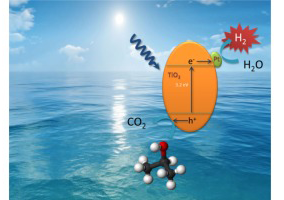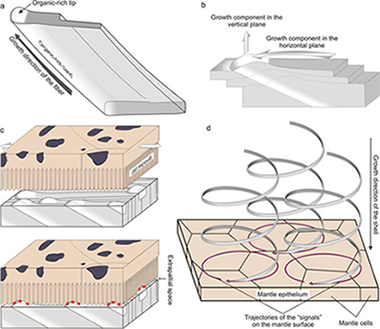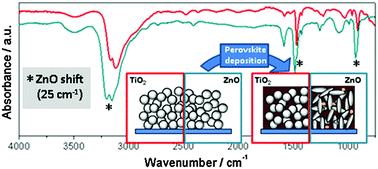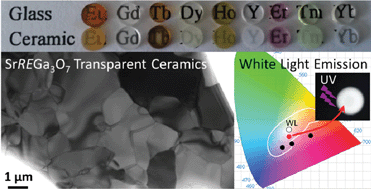Artículos SCI
2016
2016
Materiales y Procesos Catalíticos de Interés Ambiental y Energético
Towards the hydrogen production by photocatalysis
Colon, GApplied Catalysis A-General, 518 (2016) 48-59
Show abstract ▽

Nowadays, problems derived from climate change urgently demand us to focus our attention on new alternatives to fossil fuels. Within this framework, the photocatalytic production of hydrogen as a clean fuel from oxygenates arises as a necessary option that must be considered. Thus, the development of highly efficient photocatalyst is crucial in order to achieve a viable technology under the industrial point of view. For this sake, it is necessary to understand the principles of photoreforming reaction. In this brief review we will revisit the different photocatalytic materials proposed in the literature highlighting on the role of different co-catalysts.
Mayo, 2016 | DOI: 10.1016/j.apcata.2015.11.042
Materiales de Diseño para la Energía y Medioambiente
Biological strategy for the fabrication of highly ordered aragonite helices: the microstructure of the cavolinioidean gastropods
Checa, AG; Macias-Sanchez, E; Ramirez-Rico, JScientific Reports, 6 (2016) article number 25989
Show abstract ▽

The Cavolinioidea are planktonic gastropods which construct their shells with the so-called aragonitic helical fibrous microstructure, consisting of a highly ordered arrangement of helically coiled interlocking continuous crystalline aragonite fibres. Our study reveals that, despite the high and continuous degree of interlocking between fibres, every fibre has a differentiated organic-rich thin external band, which is never invaded by neighbouring fibres. In this way, fibres avoid extinction. These intra-fibre organic-rich bands appear on the growth surface of the shell as minuscule elevations, which have to be secreted differentially by the outer mantle cells. We propose that, as the shell thickens during mineralization, fibre secretion proceeds by a mechanism of contact recognition and displacement of the tips along circular trajectories by the cells of the outer mantle surface. Given the sizes of the tips, this mechanism has to operate at the subcellular level. Accordingly, the fabrication of the helical microstructure is under strict biological control. This mechanism of fibre-by-fibre fabrication by the mantle cells is unlike that any other shell microstructure.
Mayo, 2016 | DOI: 10.1038/srep25989
Nanotecnología en Superficies y Plasma
The interaction between hybrid organic-inorganic halide perovskite and selective contacts in perovskite solar cells: an infrared spectroscopy study
Idigoras, J; Todinova, A; Sanchez-Valencia, JR; Barranco, A; Borras, A; Anta, JAPhysical Chemistry Chemical Physics, 18 (2016) 13583-13590
Show abstract ▽

The interaction of hybrid organic-inorganic halide perovskite and selective contacts is crucial to get efficient, stable and hysteresis-free perovskite-based solar cells. In this report, we analyze the vibrational properties of methylammonium lead halide perovskites deposited on different substrates by infrared absorption (IR) measurements (4000-500 cm(-1)). The materials employed as substrates are not only characterized by different chemical natures (TiO2, ZnO and Al2O3), but also by different morphologies. For all of them, we have investigated the influence of these substrate properties on perovskite formation and its degradation by humidity. The effect of selective-hole contact (Spiro-OmeTad and P3HT) layers on the degradation rate by moisture has also been studied. Our IR results reveal the existence of a strong interaction between perovskite and all ZnO materials considered, evidenced by a shift of the peaks related to the N-H vibrational modes. The interaction even induces a morphological change in ZnO nanoparticles after perovskite deposition, pointing to an acid-base reaction that takes place through the NH3+ groups of the methylammonium cation. Our IR and X-ray diffraction results also indicate that this specific interaction favors perovskite decomposition and PbI2 formation for ZnO/perovskite films subjected to humid conditions. Although no interaction is observed for TiO2, Al2O3, and the hole selective contact, the morphology and chemical nature of both contacts appear to play an important role in the rate of degradation upon exposure to moisture.
Mayo, 2016 | DOI: 10.1039/c6cp01265e
Materiales Coloidales
Transparent polycrystalline SrREGa3O7 melilite ceramics: potential phosphors for tuneable solid state lighting
Boyer, M; Carrion, AJF; Ory, S; Becerro, AI; Villette, S; Eliseeva, SV; Petoud, S; Aballea, P; Matzen, G; Allix, MJournal of Materials Chemistry C, 15 (2016) 3238-3247
Show abstract ▽

Full and congruent crystallization from glass is applied to the SrREGa3O7 melilite family (RE = Eu, Gd, Tb, Dy, Ho, Er, Tm, Yb and Y). This innovative process enables the synthesis of polycrystalline ceramics exhibiting high transparency both in the visible and near infrared regions, despite tetragonal crystal structures and micrometer scale grain sizes. Moreover, glass crystallization provides an original route to synthesize new crystalline phases which are not accessible via a classic solid state reaction, as demonstrated for SrYbGa3O7 and SrTmGa3O7. To illustrate the potential optical applications of such materials, SrGdGa3O7 transparent polycrystalline ceramics are doped with Dy3+ or Tb3+/Eu3+ in order to generate white light emission under UV excitation. It is foreseen that such transparent melilite ceramic phosphors, prepared via a cost-effective process, can be successfully used in solid state lighting devices of considerable technological interest.
Abril, 2016 | DOI: 10.1039/C6TC00633G
Nanotecnología en Superficies y Plasma
Nickel-copper bilayer nanoporous electrode prepared by physical vapor deposition at oblique angles for the non-enzymatic determination of glucose
Salazar, P; Rico, V; Gonzalez-Elipe, ARSensors and Actuators B: Chemical, 226 (2016) 436-443
Show abstract ▽

This work presents a novel bilayer Ni/Cu porous nanostructured film electrode prepared by physical vapor deposition (PVD) in an oblique angle configuration. Scanning electron microscopy (SEM) data revealed that the film, with an approximate thickness of 200 nm, is formed by tilted nanocolumns of around 50 nm of diameter and an inclination of 30° with respect to the surface normal. X ray photoelectron spectroscopy (XPS) data confirmed a bilayer configuration with Cu and Ni located at the top and bottom parts of the film, respectively. A porosity of ca. 45–35% as determined by Rutherford back scattering (RBS) offered a large exposed area and excellent diffusion properties that, combined with a very good catalytic activity, rendered these films excellent electrodes for the quantitative determination of glucose. Under optimized working conditions of detection these electrodes presented a high sensitivity of 2.53 A M−1 cm−2 (R2: 0.999), a limit of detection of 0.23 μM and a time response of ca. 2 s. The sensors did not show any loss of response during a period of 4 months. The selectivity of the sensor was checked against various interferences, including physiological compounds, different sugars and ethanol, in all cases with excellent results. The feasibility of using of this sensor for practical applications was confirmed by successfully determining the glucose content in different commercial beverages.
Abril, 2016 | DOI: 10.1016/j.snb.2015.12.003
- ‹ anterior
- 225 of 420
- siguiente ›














